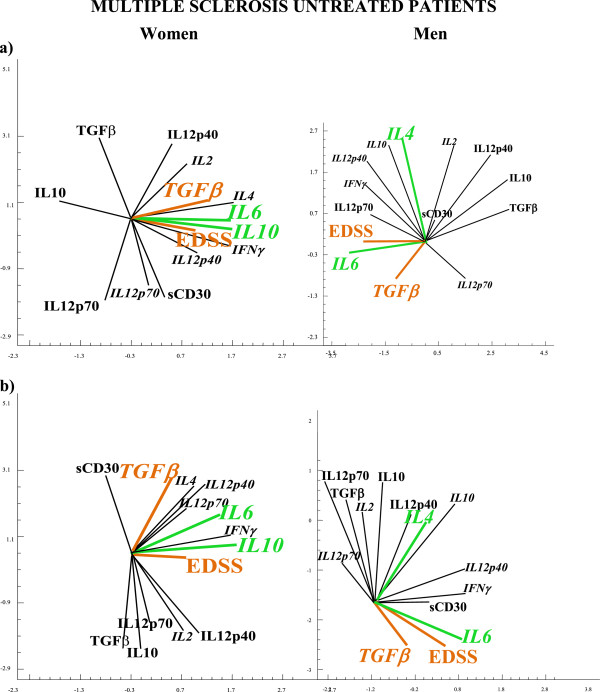Figure 3.
APC analysis in MS untreated patients using IDC, DC and whole blood Th-cytokine data-driven computational models of disease state. Independent cohorts of MS untreated patients were evaluated, using IDC, DC and whole blood Th-cytokine data-driven computational models of disease state. We used the multivariate statistical procedure of principal component analysis (PCA) which allowed us to analyze the relationships between parameters (levels of cytokines, sCD30 and EDDS values) and the behaviour of this multicomponent system as a network. The levels of cytokines were used as biomarkers of Th differentiation (Treg, Th1, Th9 or Th17) and EDSS was used as biomarker for neurological deficit. Using the PCA analysis we plotted the network of vectors obtained by analyzing the data matrix of correlation coefficients. In these plots, the angle between vectors is inversely proportional to the degree of correlation between vectors: the same vector direction indicates a positive correlation/covariance, the opposite vector direction indicates a negative correlation/covariance. This allows a visualization of the situation under study and our results indicate that the IL6 pathway is involved in neurological deficit increase and Treg imbalance in resting (Figure 3a) and activated (Figure 3b) conditions in untreated, male and female patient groups. This we concluded from the fact that cytokine level increases of IDC/DC IL6 and TGFβ (the dual biomarker for an increase in Th17 cells and a fall in Treg cells) were positively related to increases in neurological deficit (EDSS) (Figures 3a and 3b).

